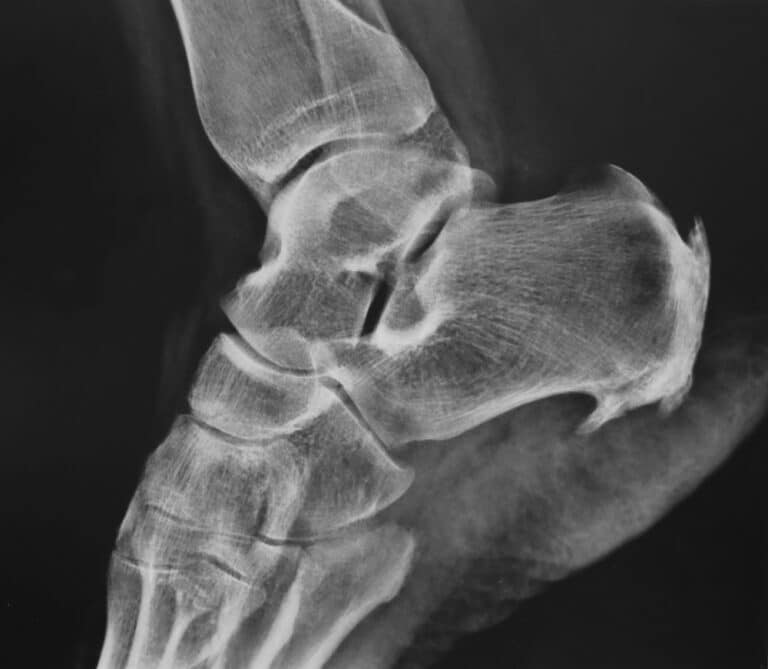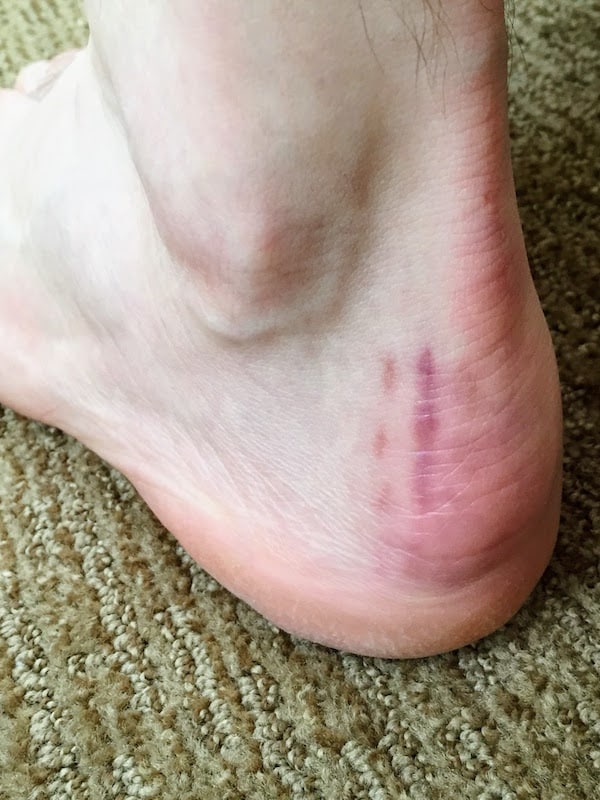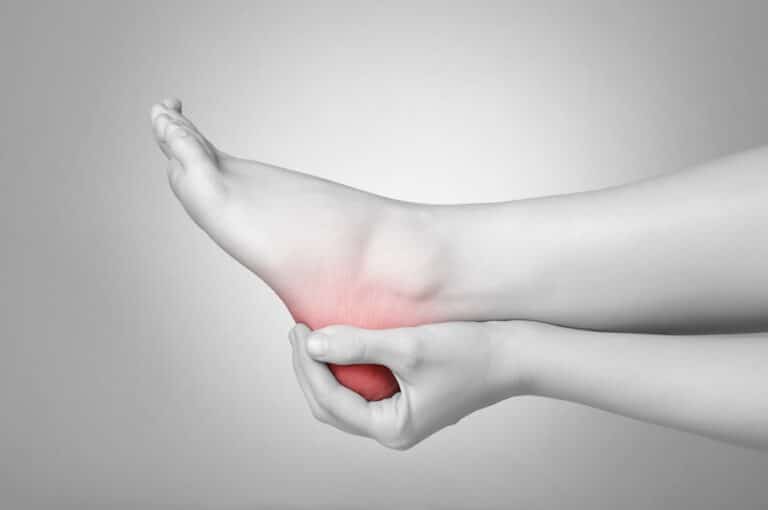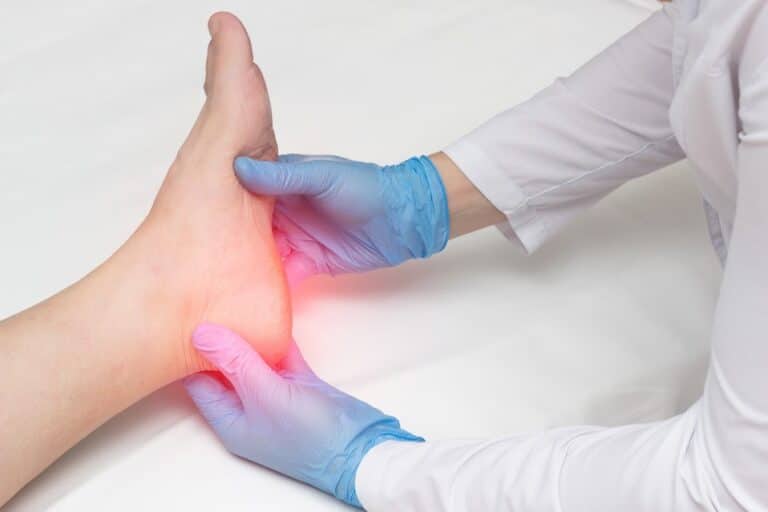A callus is a thickened area of skin that develops due to repetitive friction or pressure. It typically forms on weight-bearing areas of the feet, such as the heels or balls of the feet. Calluses are generally painless but may cause discomfort or a burning sensation.
Here are the key difference between a callus and a bunion:
Callus | Bunion | |
|---|---|---|
| Cause | Develops due to friction or pressure | Result of a structural deformity of the foot |
| Location | Typically found on weight-bearing areas | Forms at the base of the big toe joint |
| Appearance | Thickened, hardened area of skin | Bony bump at the base of the big toe |
| Pain | Generally not painful, unless excessively thick | Can cause pain and discomfort, especially when walking or wearing tight shoes |
| Treatment | Proper foot care, cushioning, and exfoliation | Conservative measures or surgical intervention depending on severity |
| Examples | Thickened skin on the soles of the feet | Bony bump at the base of the big toe joint |
It is important to consult with a healthcare professional for an accurate diagnosis and appropriate treatment options based on your specific condition.
Get a 10% Discount on Minimally Invasive Bunion Surgery
Underlying Causes: Differentiating Factors
A callus and a bunion are two distinct foot conditions with different causes and characteristics. Here are the key differences between them:
Callus:
- Cause: Calluses are formed due to friction or pressure on the skin, often caused by ill-fitting shoes or repetitive activities.
- Foot Deformation: Calluses do not involve any foot deformities.
- Foot Mechanics: Calluses can occur on any part of the foot and are typically a result of normal foot mechanics.
- Genetic Predisposition: Calluses are not typically influenced by genetics.
- Risk Factors: Wearing shoes that do not fit properly and engaging in activities that put excessive pressure on the feet are common risk factors for callus formation.
- Associated Conditions: Corns, dry or cracked skin, and rough patches may accompany calluses.
Bunion:
- Cause: Bunions are primarily caused by a structural deformity of the foot, specifically the misalignment of the big toe joint.
- Foot Deformation: Bunions involve a visible and often painful deformity, characterized by the protrusion of the big toe towards the other toes.
- Foot Mechanics: Abnormal foot mechanics, such as overpronation or excessive pressure on the big toe, can contribute to bunion formation.
- Genetic Predisposition: Bunions can have a genetic component, with a higher likelihood of occurrence in individuals with a family history of the condition.
- Risk Factors: Genetics, foot structure, and certain footwear choices can increase the risk of developing bunions.
- Associated Conditions: Bunions may be accompanied by other foot conditions such as hammertoes, overlapping toes, and foot pain.
It’s important to consult a healthcare professional for an accurate diagnosis and appropriate treatment options for both calluses and bunions. They can provide personalized guidance based on individual circumstances.
Understanding Calluses: Causes, Symptoms, and Formation
Calluses are thickened areas of skin that develop due to repeated friction, pressure, or irritation. Here’s a breakdown of the causes, symptoms, and formation of calluses:
Causes:
- Friction: Continuous rubbing or friction against the skin, often caused by ill-fitting shoes, can lead to callus formation.
- Pressure: Prolonged pressure on specific areas, such as the feet or hands, can result in callus development.
- Repetitive Actions: Certain repetitive actions, such as playing musical instruments or manual labor, can contribute to callus formation.

Symptoms:
- Thickened Skin: Calluses appear as areas of thickened, hardened skin.
- Rough Texture: The affected skin may feel rough or bumpy to the touch.
- Discoloration: Calluses can range in color from yellowish to gray.
- Pain or Discomfort: In some cases, calluses can cause pain or discomfort, especially when pressure is applied.
Formation:
- Skin Protection: Calluses form as a protective response to repetitive friction or pressure. The skin thickens to shield the underlying tissues from further damage.
- Increased Skin Cell Production: The constant friction or pressure triggers the skin to produce more keratinocytes, the cells that make up the outer layer of the skin.
- Accumulation of Dead Skin Cells: As new skin cells are produced, older cells are pushed to the surface. Over time, these dead skin cells build up and create the thickened area characteristic of a callus.
It’s important to note that while calluses are generally harmless, they can become painful or develop complications if not properly managed.
Exploring the Anatomy of a Callus: How It Develops
A callus is a thickened area of skin that develops due to prolonged pressure or friction. It forms when the skin responds to this stimulus by producing additional layers of skin cells. The process involves increased keratin production, which results in the thickening of the affected area. Calluses typically have a hardened and raised appearance compared to the surrounding skin.
They commonly occur on the feet, particularly on the heels, balls of the feet, and toes. Calluses are generally not painful but can become uncomfortable if they become inflamed or infected. Proper foot care, such as wearing well-fitting shoes and regularly moisturizing and exfoliating the skin, can help prevent the formation of calluses. If calluses are causing discomfort, it’s advisable to seek medical attention for appropriate treatment options.
Understanding Bunions: Causes, Symptoms, and Development
A bunion is a bony bump that forms at the base of the big toe, causing it to deviate outward. It develops gradually over time due to several factors, including genetic predisposition, abnormal foot mechanics, and wearing tight or ill-fitting shoes. The main symptom of a bunion is a visible protrusion at the base of the big toe, accompanied by pain and discomfort.
Other symptoms may include redness, swelling, and difficulty wearing certain types of footwear. Bunions can worsen over time if left untreated, leading to increased pain and limited mobility.

They are more common in women and can be associated with certain foot conditions, such as flat feet or arthritis. Treatment options for bunions range from conservative measures, such as wearing supportive shoes and using orthotic devices, to surgical intervention in severe cases. Seeking early treatment can help alleviate symptoms and prevent further progression of the bunion.
Anatomy of a Bunion: Unraveling Its Formation
A bunion is a bony deformity that forms at the base of the big toe. It occurs when the metatarsal bone of the foot shifts outward and the big toe deviates inward, causing the joint to protrude. The formation of a bunion involves several anatomical changes:
- Metatarsal Misalignment: The metatarsal bone connecting to the big toe shifts outward, creating an angle between the bone and the rest of the foot.
- Hallux Valgus: The big toe deviates inward, pointing towards the other toes instead of straight ahead. This misalignment puts pressure on the joint, leading to inflammation and pain.
- Joint Enlargement: Over time, the pressure and friction on the joint cause the bone to enlarge and form a bony bump, known as the bunion.
- Soft Tissue Changes: The ligaments and tendons around the joint may become stretched or weakened, further contributing to the deformity.
The exact cause of bunions is not fully understood, but factors such as genetics, foot structure, improper footwear, and certain medical conditions can increase the risk. Bunions can be progressive and worsen over time if not addressed. Seeking early treatment and wearing proper footwear can help manage symptoms and slow down the progression of the deformity.
Treatment Approaches for Calluses and Bunions
Treatment approaches for calluses and bunions may vary depending on the severity of the condition and the level of discomfort experienced. Here are some common treatment options:
Callus Treatment:
- Proper Footwear: Wearing well-fitting shoes with adequate toe room can help reduce pressure on the affected area.
- Padding or Insoles: Applying cushioning pads or using custom orthotic insoles can help alleviate pressure and provide relief.
- Regular Exfoliation: Gently exfoliating the callus with a pumice stone or a foot file can help remove dead skin and reduce its size.
- Moisturization: Applying moisturizing creams or lotions to the affected area can help soften the callus and prevent further dryness and cracking.
- Avoidance of Irritants: Minimizing exposure to harsh chemicals or activities that can worsen the callus formation, such as repetitive friction or pressure.
Bunion Treatment:
- Footwear Modifications: Wearing wide-toe shoes or using bunion-friendly footwear that provides adequate space and support can help alleviate pressure on the bunion.
- Orthotics and Inserts: Custom orthotic devices or bunion pads can help distribute pressure evenly, reduce pain, and prevent further progression.
- Pain Relief Medication: Over-the-counter pain relievers or anti-inflammatory medications may be recommended to manage pain and inflammation.
- Physical Therapy: Specific exercises and stretches can help improve joint mobility, strengthen surrounding muscles, and reduce discomfort.
- Surgical Intervention: In severe cases where conservative measures fail to provide relief, bunion surgery may be considered to realign the affected joint and correct the deformity.
It is important to consult with a healthcare professional for an accurate diagnosis and personalized treatment plan based on individual needs and condition severity.
Addressing Calluses: Effective Remedies and Prevention Strategies
Addressing calluses involves a combination of remedies and prevention strategies to reduce their size and prevent their recurrence. Here are some effective approaches:
- Soaking and Exfoliating: Soaking your feet in warm, soapy water can help soften calluses. After soaking, gently exfoliate the area using a pumice stone or foot file to remove dead skin and reduce the thickness of the callus.
- Moisturization: Apply a thick moisturizing cream or lotion to the affected area regularly to keep the skin hydrated and prevent dryness, which can contribute to callus formation.
- Use Cushioning Pads: Apply non-medicated callus pads or cushions to the callused area to reduce pressure and friction, providing relief and promoting healing.
- Wear Proper Footwear: Opt for shoes that fit well and have a wide toe box, allowing your toes to move freely. Avoid tight or narrow shoes that can increase pressure and contribute to callus formation.
- Use Orthotic Inserts: Consider using orthotic inserts or arch supports to provide additional cushioning and support, helping to distribute pressure more evenly across the foot and reducing callus formation.
- Avoid Excessive Pressure or Friction: Minimize activities that can cause excessive pressure or friction on your feet, such as prolonged standing, walking barefoot, or wearing high heels for extended periods.
- Regular Foot Care: Maintain good foot hygiene by keeping your feet clean, dry, and moisturized. Trim your toenails properly and avoid cutting them too short to prevent additional pressure on the toes.
- Seek Professional Help: If the calluses persist, become painful, or show signs of infection, consult a healthcare professional or a podiatrist for further evaluation and treatment options.
By incorporating these remedies and prevention strategies into your routine, you can effectively address calluses and reduce their impact on your foot health.
When to Seek Professional Help: Callus or Bunion?
If you’re unsure whether you have a callus or a bunion, it’s important to know when to seek professional help. Look out for persistent pain, difficulty walking, changes in appearance, increased discomfort, or recurring/worsening symptoms. Consulting a healthcare professional or a podiatrist can lead to an accurate diagnosis and personalized treatment plan. They will evaluate your condition, provide guidance, and offer appropriate remedies to address your specific needs.
References:
- Mayo Clinic. (2022). Corns and Calluses. Retrieved from https://www.mayoclinic.org/diseases-conditions/corns-and-calluses/symptoms-causes/syc-20355946
- Bunion Surgery Miami. (n.d.). Retrieved from https://bunionsurgerymiami.com/




